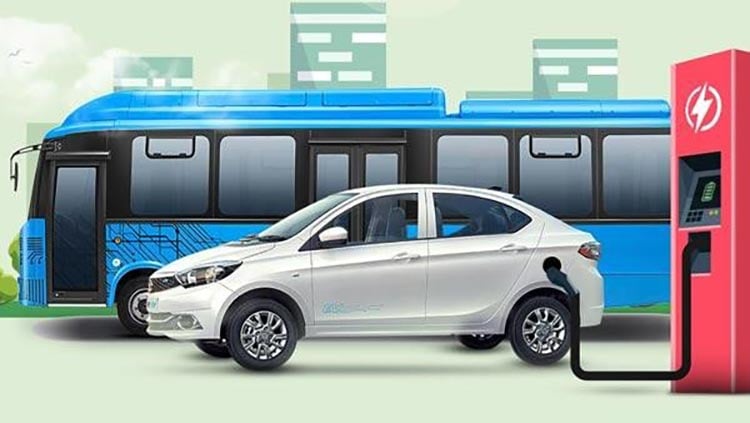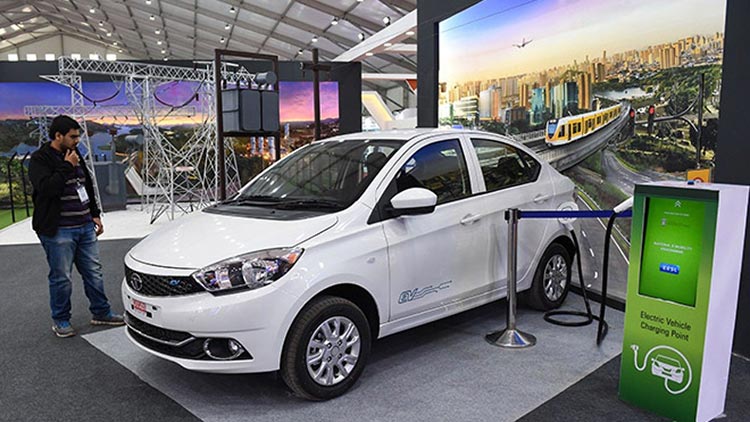
EVs are expensive compared to ICE vehicles because of the battery cost. The EV battery cost makes up 60% of the total EV price. Therefore, to compensate for the high price of EVs, the automakers add features and functionalities to present them as differentiating factors to the buyers. These features generally aim to provide safety and convenience to the driver. If you look at the currently available EV models like the Nexon, MG ZS, Hyundai IONIQ and Kia EV6, they all offer various technological functionalities like connectivity, voice assistant, remote locking/unlocking and advanced driving assistance system. The smartphone era generation gives preference to vehicle technology and in-car experience. Hence, when it comes to buying ICE vehicles and EVs at the same price, more often than not EVs equipped with most technological features become the first choice. In this regard, we spoke to Mohit Sharma – Research Analyst; Smart Automotive and Soumen Mandal – Senior Analyst; IoT, Automotive & Devices Ecosystem of Counterpoint Research about the recent FAME scheme controversy, why four-wheeler EVs yet to dominate Indian market, and also about how connected cars market will increase in India.
Mohit Sharma
Q. Although the government has unleashed the FAME scheme to boost EV growth in India, at the same time, it is also giving a nightmare to the companies, especially two-wheelers. As per a media report, around Rs 400 crore subsidy is yet to be disbursed by the government. What are your views in this regard? Will this controversy crush the growth of EVs in India?
The government introduced the FAME scheme in 2019 to increase EV adoption in India by offering subsidies totaling ₹10,000 crore till March 31, 2024. The Ministry of Heavy Industries has laid out certain eligibility criteria to avail the incentive. These criteria have several parameters like vehicle range, speed, energy consumption, and localization. For localization, the government dictates that the EV manufacturer must locally source 50% of the total parts to receive benefits under the FAME scheme. The scheme has been a success, as in 2022 India registered over six million electric two-wheelers, which was more than four times the electric two-wheelers sold in 2021.
Ola Electric, Okinawa and Hero Electric are the top three electric two-wheeler sellers. In recent developments, the government has stopped the subsidies to companies including Okinawa and Hero Electric for failure to meet FAME criteria like localization. This stringent action from the authorities may result in a decline in annual electric two-wheeler sales as Okinawa and Hero Electric together sold over 2 million electric two-wheelers in 2022. However, the government’s action has set the right precedent for other companies. The barred companies will look to resolve the issues as soon as possible to again become eligible for the FAME subsidies as they don’t want to lose their market share to other competitors. We have seen this in the case of Ola Electric and Ather Energy when they both agreed to include the charger in the retail price.
Q. In India, the growth in EVs are mostly spearheaded by two-wheelers and three-wheelers unlike the west and in China the growth is also dominated by four wheelers. What is the problem with India’s EV four wheelers growth?
Unlike the West, India is still an emerging and very cost-sensitive market. Currently, the highest-sold electric car is the Tata Nexon, which is priced close to ₹14 lakh, putting the model in the premium segment of the Indian market. Also, there is a scarcity in terms of choosing electric cars. There are only a handful of electric car models available in the market in the ₹14 lakh-₹20 lakh range, from Hyundai and MG. This year, Tata and MG Motor have introduced new electric car models Tata Tiago EV and MG Comet, both priced between ₹8 lakh and ₹9 lakh to increase the adoption of electric cars. Hence, to fuel the growth of the Indian electric four-wheeler market, mass-market models like the WagonR or Baleno are required as this is the price range that contributes big to the total passenger car sales in India.

Q. Can you please highlight some of the unique projects and surveys Counterpoint has carried out over the past few months in EVs and automotive industry? Also, going forward what are some of the projects/study will be done by Counterpoint for the EV industry?
We are actively conducting research across the entire value chain, from chips to connectivity to the cloud. Our focus is on the CASE segments – Connectivity, Autonomous vehicles, Shared mobility/services and Electric vehicles – which have gained significant traction in recent times. Besides, we are closely monitoring the supply chain ecosystem, which plays a crucial role in the development of these four segments. Our approach involves in-depth analysis to uncover valuable insights that can benefit automotive industry players, government bodies and financial organizations in making informed decisions.
Soumen Mandal
Q. Currently, where do you see the market for electric vehicles in India and is the growth rate sufficient? What does India need to do to increase its growth pace like the other developed countries?
As of the end of 2022, EV penetration in two-wheelers in India was at 4%, while for passenger cars it was only 1.3%. This slow adoption can be attributed to several challenges such as pricing, range anxiety, and lack of charging infrastructure. In contrast, China has an EV penetration rate of 26.6%, while for the US it is 6.9%. France has a rate of 21.3%, Germany 31.9%, UK 22.9% and South Korea has a rate of 8.2%. Japan is also falling behind in EV adoption compared to other major automotive regions. However, India is taking steps in the right direction. It is working towards building its own battery cell and pack capabilities, which is expected to significantly reduce battery prices. The Indian government is also continuously updating its EV policies and providing subsidies to encourage both automakers and consumers. As a result, we expect India’s passenger car EV penetration to cross 21% by 2027, while two-wheeler EV penetration will reach 18%.
Q. There are incentive schemes and investments announced by the government of India, but there are still some tough challenges that need to be addressed. So, what do you think are the current impediments and what could be the solutions?
India’s government has taken several positive steps in the recent past, including policy formulation and launching incentive schemes. However, it may take some time to see the benefits of these efforts. Currently, the government is investigating alleged malpractices by OEMs in receiving FAME II subsidies. This shows the government’s commitment to implementing policies strictly. To further promote EV adoption, India should focus on the PLI scheme to build a more robust local ecosystem for auto components, ACC battery and technological developments. Successful EV adoption in other countries was mostly achieved through subsidies and incentives. Private players are slowly increasing investment in the EV sector and we can expect more players to enter this space if the government provides subsidies for the next 1-2 years. It will be interesting to see how these new-age startups perform once the government removes subsidies.
Q. A couple of months back we saw a huge ton of Lithium being discovered in Salal himalayan region of J&K, which according to EV experts it will boost EV growth in India. But, environment experts and ASI have something else to say. So, what are your views in this regard? Is it a hype or a possibility?
The adoption of EVs can significantly lower CO2 emissions, but lithium mining can have a negative impact on biodiversity. The J&K region is located on the boundary between the Eurasian and Indian tectonic plates, making it an earthquake-prone area. However, there were reports recently that Lithium reserves had been discovered in Rajasthan, which may be a better option than J&K. If India can extract lithium domestically, it can reduce its dependence on foreign countries and even become self-reliant in EV development. This would substantially lower battery prices and lead to mass adoption of EVs. I believe the government will carefully consider all possible outcomes before making any decision on mining activities in J&K.

Q. According to a survey report by Counterpoint, connected Car Sales Grew 12% YoY in 2022. In this perspective, what is the growth rate you are expecting for 2023 and what India needs to do in this aspect to become globally competitive?
In 2022, India's connected car sales nearly doubled, resulting in a 22% embedded connectivity penetration in new car sales. As EV sales and consumer awareness of safety and security increase, we anticipate connected penetration to surpass 26% by the end of 2023. Globally, one in two cars sold is equipped with embedded connectivity, indicating that India lags behind the global market but is rapidly catching up. Maruti Suzuki's efforts will aid India in matching the global connected car market as the automaker has nearly 40% of the total passenger car market in India. At present, embedded connectivity is primarily available in the top variants of a limited number of models, but it is expected to expand to more models in the coming years, with 2025 anticipated to be the inflection point. Currently, India does not have any policy mandating embedded connectivity in passenger cars, unlike Europe. However, if such a policy is introduced during the latter half of the decade and given the ongoing development of India's roads and transport system, the penetration of embedded connectivity in new cars will likely accelerate even further.

